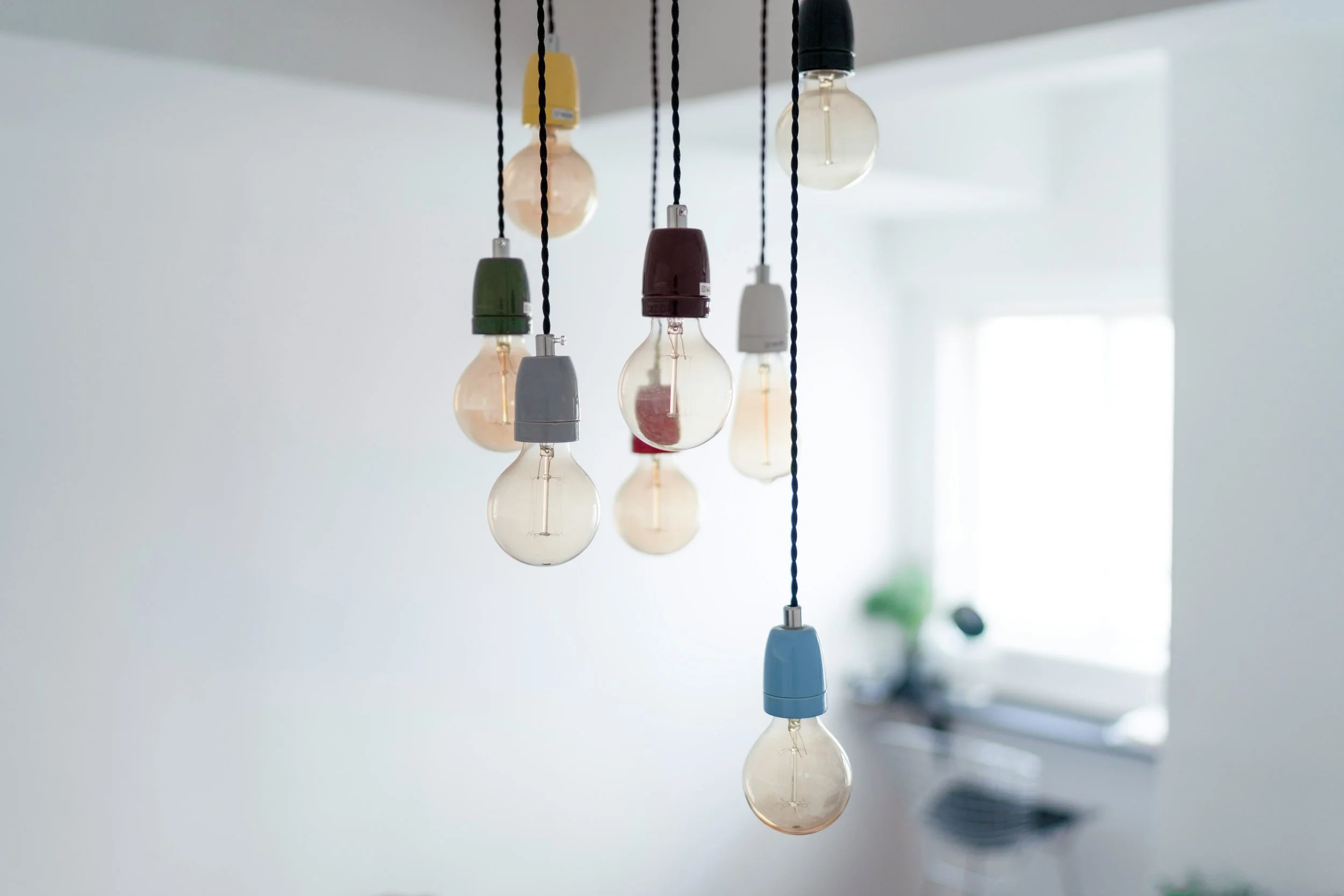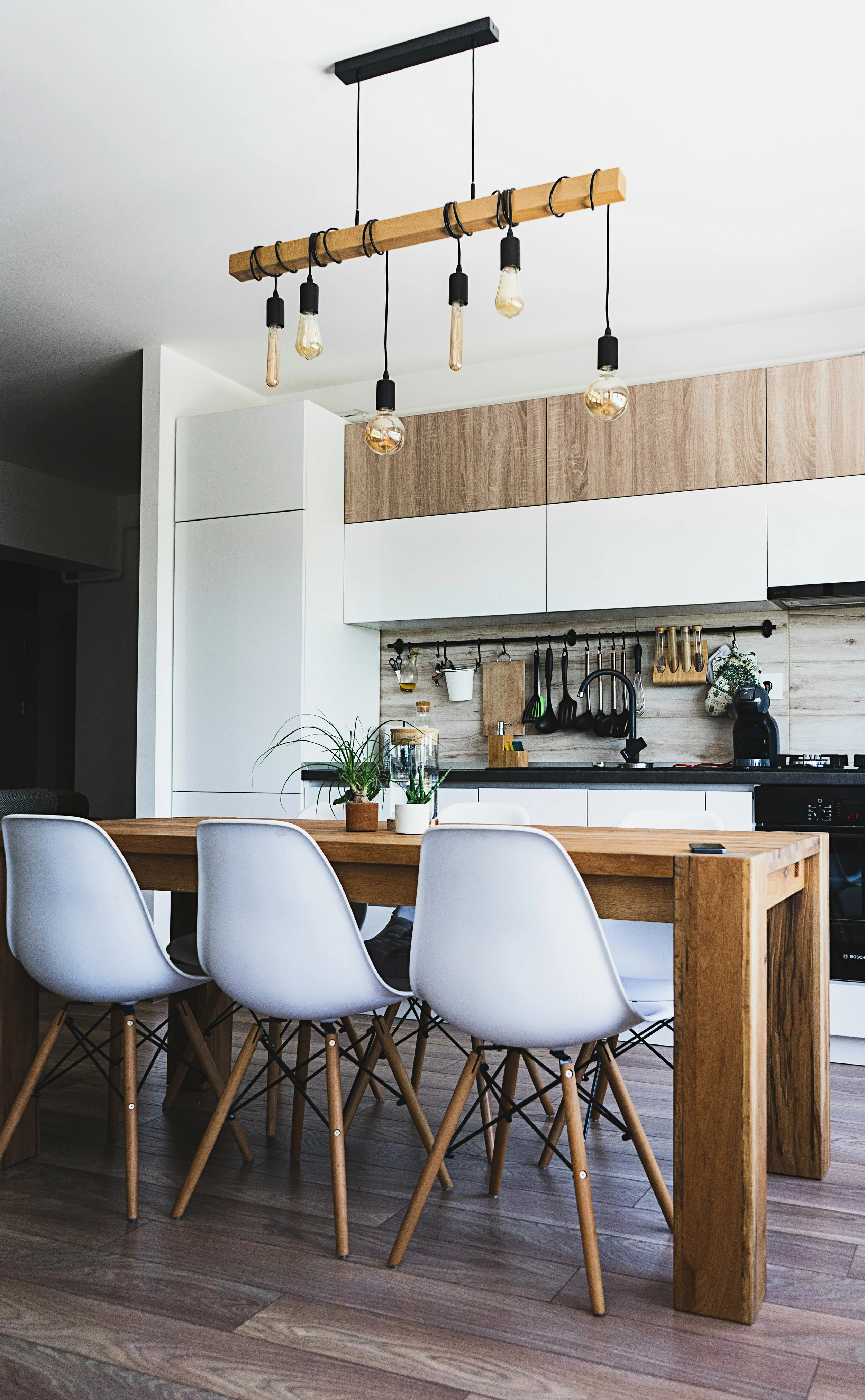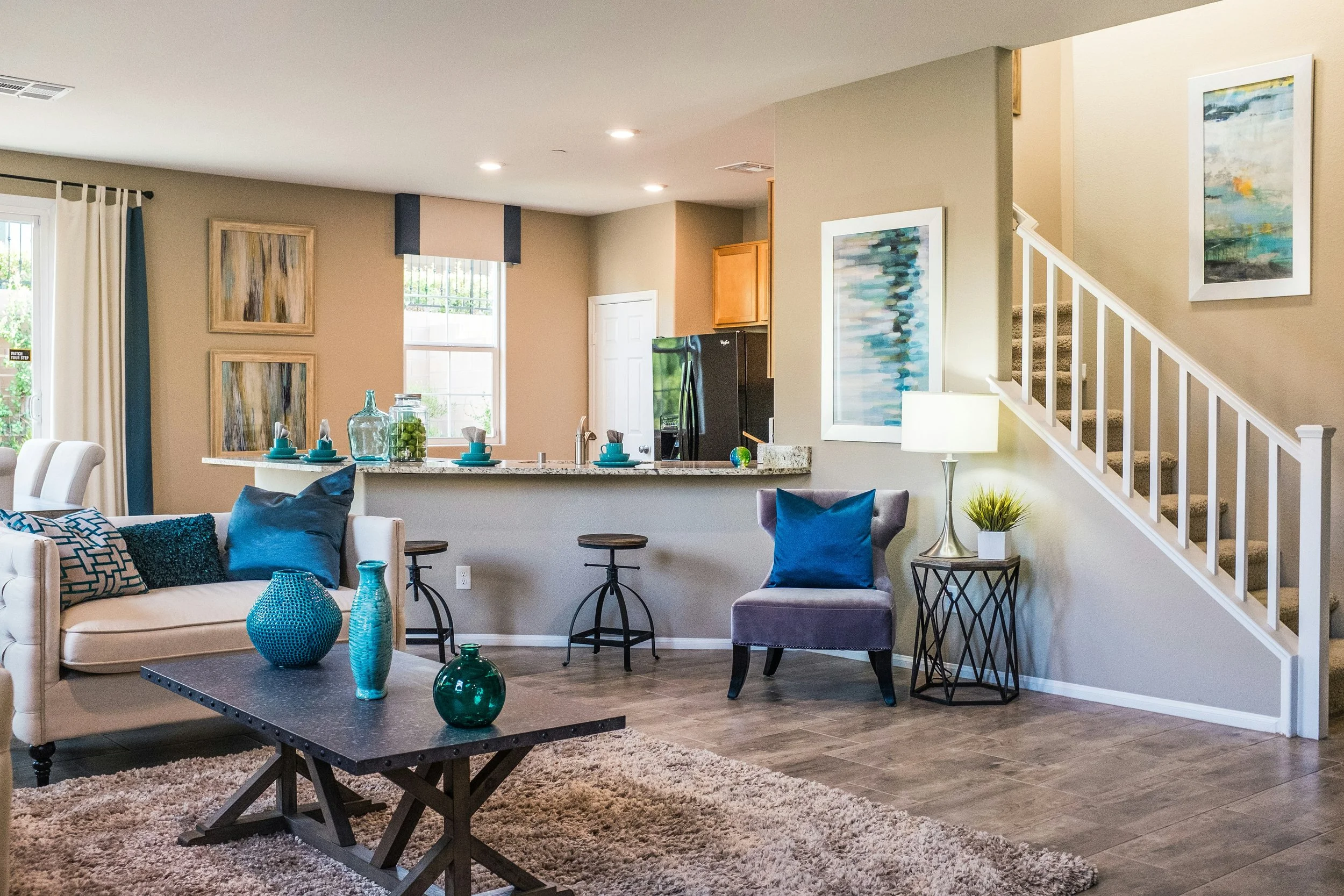Selecting the Right Types of Light Bulbs for Your Modular Home
Selecting the right light bulbs for your modular home is an exciting step toward creating your perfect living space! It's about more than just lighting up rooms—it’s about choosing bulbs that save energy, set the right mood, and perfectly match your home’s design. Picture yourself shaping each room with light, turning your home into a bright, welcoming, efficient, and beautifully lit place.
Today, homeowners have many options available. Traditional incandescent bulbs offer a cozy glow, while LED bulbs are great for cutting down on electricity use and last longer. There are also smart bulbs that let you control the light from your phone, changing brightness and color to suit your needs. This guide will help you understand factors to consider when selecting light bulbs, the different types of light bulbs, and what to consider when picking them for your modular home.
Selecting the Right Types of Light Bulbs for Your Modular Home
Selecting the right light bulb goes beyond just illuminating your space; it involves thoughtful consideration of several factors that can impact your daily life. Understanding how functionality, health and well-being, cost saving, comfort, and productivity play into your lighting can lead to a more beneficial decision. Let's delve into each of these aspects:
Functionality
Any light bulb's primary function is to provide illumination, but its effectiveness depends on its design and technology. Different spaces and tasks require different types of lighting.
For instance, a study or home office may benefit from brighter, cooler light that enhances focus and alertness, while living areas may be better suited to warmer, softer light that creates a relaxing environment. LED bulbs, known for their versatility, offer a variety of color temperatures and brightness levels, rendering them suitable for various functional needs within a home.
Health and Well-Being
Lighting can profoundly affect a person's health and well-being. Exposure to natural light regulates circadian rhythms, influencing sleep patterns, mood, and overall health. When natural light isn't available, artificial lighting that mimics natural light's properties can be beneficial.
For example, exposure to blue light (common in cooler, daylight-mimicking bulbs) is stimulating and can improve mood and alertness during the day. However, it can be disruptive at night and potentially interfere with sleep. Choosing bulbs with warmer color temperatures for evening use can help mitigate this issue, contributing to better sleep and, consequently, better health.
Cost Saving
Energy efficiency directly impacts cost savings in terms of electricity usage. LED bulbs, while more expensive upfront, consume significantly less energy and have a longer lifespan than traditional incandescent bulbs. This means fewer replacements and lower electricity bills over time. By selecting energy-efficient lighting options, you reduce your environmental footprint and enjoy considerable savings on operational costs, making it an economically smart choice in the long run.
Comfort and Productivity
The right lighting can enhance comfort and productivity in any setting. Poor lighting conditions, such as harsh or dim fluorescent lighting, can lead to eye strain and discomfort, decreasing productivity.
In contrast, well-designed lighting that provides adequate illumination without glare or harsh shadows can create a comfortable environment that supports sustained focus and productivity. This is particularly important in spaces designed for reading, studying, or any work that requires attention to detail.
Incorporating lighting that can be adjusted based on the time of day, the task at hand, or personal preference—such as dimmable lights or smart lighting systems—further enhances comfort and adaptability, allowing individuals to tailor their environment to their specific needs.
Understanding Light Bulb Types
Today's homeowners have various options for kinds of light bulbs, each offering distinct benefits. Whether you're looking to retrofit your home with energy-efficient lighting, reduce your carbon footprint, improve the aesthetic appeal of your spaces, or simply choose the best lighting for comfort and health, this guide provides the insights needed to make those decisions confidently. Let’s explore the primary types of light bulbs available: LED, incandescent, fluorescent, and halogen.
-
Code Example: A19
A19 bulbs are the standard size for most residential lighting fixtures, including table lamps, ceiling fixtures, and floor lamps. They provide a good balance of size and light output, making them versatile for general lighting purposes in homes and offices.
Advantages: LED bulbs are energy efficient, consuming up to 90% less power than incandescent bulbs. They also have a long lifespan, often up to 50,000 hours or more. LED bulbs also give off less heat, making them safer to the touch and reducing the risk of overheating in enclosed fixtures.
Disadvantages: LED bulbs have a higher initial cost than traditional bulbs, but this is offset by their longer lifespan and lower energy consumption.
Best Use Cases: LED bulbs are versatile, making them suitable for almost any application, including general room lighting, under-cabinet lighting, task lighting, outdoor lighting, and recessed downlights.
-
Code Example: A15
These bulbs are sometimes in decorative lighting fixtures where a smaller bulb size is preferred. Their compact size makes them suitable for tighter spaces where a standard A19 bulb might not fit.
Advantages: Incandescent bulbs offer a warm, inviting light and have the benefit of being dimmable. They are also the most affordable in terms of upfront cost.
Disadvantages: These bulbs are the least energy-efficient option available today. They convert only about 10% of their energy into light, with the rest emitted as heat. Their lifespan is significantly shorter than that of LEDs, typically around 1,000 hours.
Best Use Cases: Incandescent bulbs are best used in environments where the quality of light is critical for ambiance, such as living rooms or dining areas. This bulb type is also great for areas where heat is needed, like the bathroom, as it is a safe way to produce heat.
-
Code Example: Spiral, T2
Spiral CFLs are easily recognizable by their twisted, spiral-shaped tube. This design was developed to fit more lighting surface area into a compact bulb, increasing its efficiency and light output without increasing its size. The spiral design allows these bulbs to distribute light more evenly than traditional incandescent bulbs.
Meanwhile, the T2 designation refers to the diameter of the bulb’s tube, which is approximately 2/8 of an inch (or a quarter of an inch). T2 CFLs are known for their slim profile, making them even more compact than standard spiral CFLs. They are highly efficient, offering the same light output as larger CFLs while taking up less space. This makes them an excellent choice for fixtures with limited space or use in more discreet lighting applications.
Advantages: Fluorescent bulbs are more energy-efficient than incandescent bulbs and have a longer lifespan, usually around 7,000 to 15,000 hours. They provide a bright, widespread light, making them ideal for large spaces.
Disadvantages: Fluorescent lamps deteriorate faster when frequently switched on and off. Older fluorescents typically take 10-30 seconds to reach full brightness. They also contain mercury, which requires careful handling and disposal.
Best Use Cases: These bulbs are well-suited for garages, basements, and areas that need broad, bright lighting.
-
Code Example: PAR16
PAR16 bulbs are part of the "Parabolic Aluminized Reflector" (PAR) series. They have a reflective surface inside the bulb that focuses the light into a more directed beam. The number 16 indicates the diameter of the bulb's face in eighths of an inch, making the PAR16 bulb 2 inches in diameter. The focused beam of light produced by PAR16 bulbs makes them ideal for spotlighting and accent lighting. They can highlight artwork, architectural details, or any focal point in a room or outdoor space.
Advantages: Halogen bulbs offer a light quality that closely mimics natural sunlight, making colors appear more vibrant. They are energy-efficient and work well with dimmers.
Disadvantages: They generate much heat and have a shorter lifespan than incandescent bulbs, usually around 2,000 hours.
Best Use Cases: Halogen bulbs are excellent for task lighting, such as under-cabinet lighting or recessed lighting in kitchens or desk lamps, where precise, bright light is beneficial.
Decoding Light Bulb Base Sizes and Types
Selecting the right light bulb doesn't stop with choosing the bulb type; you must also ensure that the bulb's base matches your fixtures. Different types of light bulb bases come in various sizes, each designed to fit specific fixtures. Understanding these differences is crucial for both functionality and safety. Here's a breakdown of the standard light bulb base sizes and types:
E26/E27 Bases
These are the most common sizes for household light bulbs in the United States (E26) and Europe (E27). The numbers represent the diameter of the base in millimeters. These slight differences usually do not affect compatibility, and bulbs can often be used interchangeably. Ideal for table lamps, floor lamps, and most overhead light fixtures, the E26/E27 bases are the standard for residential lighting.
GU10 Base
The GU10 base is another type of push-and-twist base but with two protruding pins. It's commonly found in kitchens and workspaces. The unique base design is essential for fixtures designed to lock the bulb in place, providing a secure installation that’s crucial for the bulb's operation, especially in overhead or angled fixtures.
Candelabra Bases
Candelabra bases (E12 in the US) are smaller than the standard E26/E27 bases and are used for decorative lighting fixtures, like chandeliers and small lamps. These bases are designed for smaller, often decorative bulbs that complement the aesthetic of delicate lighting fixtures.
MR16 Base
The MR16 base, with two thin pins, is typically used for low-voltage lighting, such as spotlights and recessed lighting. A transformer is required to reduce household voltage. The low voltage and precise beam control make MR16 bases ideal for accent lighting, highlighting artwork or architectural features without the risk of heat damage.
Exploring Light Bulb Shapes
The shape of the light bulb has a major impact on enhancing the aesthetics and functionality of your home's lighting. Just as a piece of furniture or a work of art can transform a room, the appropriate light bulb shape can impact the ambiance and effectiveness of your lighting. Understanding the various bulb shapes and their intended uses allows you to optimize the lighting in each room and complement and enhance its design and functionality.
Why Bulb Shape Matters
Light bulb shapes are designed for specific purposes, from focusing light to spreading it evenly across a space. A bulb's shape can influence the direction and quality of light, affecting how well it illuminates a room or object. For example, an A-bulb is ideal for general lighting, as its shape allows light to disperse evenly.
Impact on Aesthetics
The right bulb shape can complement the design of your lighting fixture and the room’s overall style. Pendant fixtures' globular bulbs (G series) can create a modern, sleek look, while C-shaped bulbs in a chandelier offer a more traditional and elegant appearance.
Impact on Functionality
A light bulb's functionality is greatly influenced by its shape. Certain shapes are better suited for specific tasks. For instance, A-shaped bulbs are versatile and suitable for general lighting, whereas PAR (Parabolic Aluminized Reflector) bulbs are ideal for creating focused, directional lighting, perfect for highlighting artwork or architectural details.
Choosing the Right Light Bulb for Each Room
Selecting the appropriate light bulb for each area of your modular home can dramatically influence its ambiance and functionality. You can tailor your lighting to meet each room's specific needs and aesthetics by considering factors such as color temperature, brightness, and energy efficiency. Here's a guide to help you make the best choices for various spaces within your home.
Living Room
The living room is a hub for relaxation and socializing, necessitating a versatile lighting solution. The best light bulbs for a living room are soft white incandescent bulbs, which provide a cozy and inviting atmosphere similar to incandescent bulbs but with greater energy efficiency. Choose bulbs with a color temperature of around 2700K to 3000K to achieve this warm glow. Additionally, incorporating dimmable LEDs allows you to adjust the lighting intensity to match the time of day or mood, offering flexibility and energy savings.
Kitchen
The kitchen is a functional space that benefits from bright, task-oriented lighting. Warm white LED bulbs, with a color temperature between 3000 and 4000K, mimic daylight and enhance visibility, making them ideal for food preparation and cooking tasks. Consider under-cabinet lighting with LED strips or puck lights to illuminate countertops without casting shadows. For the general kitchen area, overhead LED fixtures or recessed lighting can provide the broad, bright light needed for overall visibility and safety.
General Home Lighting
It's important to balance coziness and functionality in the rest of your home, including hallways, bedrooms, and bathrooms. A mix of color temperatures can cater to various needs throughout the day. For bedrooms and living areas where relaxation is key, stick with warmer color temperatures (3000K to 4000K). Consider slightly cooler temperatures (2700K to 3000K) in spaces requiring focus and clarity, such as home offices or reading nooks.
Why Recessed Lighting is Ideal for Modular Homes
Recessed lighting plays a pivotal role in the design and functionality of modular homes, offering a sleek and modern lighting solution that seamlessly integrates into the home's architectural elements. This lighting style is not just aesthetically pleasing; it also provides practical benefits that make it an ideal choice for the unique characteristics of modular construction. Here’s a detailed look at the significance of recessed lighting in modular homes:
Space Efficiency and Aesthetics
Recessed lighting is unobtrusive, and modular homes can benefit greatly from it. These fixtures are installed into the ceiling, leaving the ceiling line clean and unbroken, which can help create the illusion of a higher ceiling and a more spacious room.
Versatility in Design
Recessed lighting offers unparalleled versatility. It can serve as ambient, task, or accent lighting, depending on placement and intensity. This flexibility allows homeowners to tailor lighting schemes to each room's specific needs and design themes.
Uniform Lighting Distribution
Recessed lighting can be strategically placed to provide uniform lighting across a room, eliminating shadows and dark spots. This is especially beneficial in modular homes, where open floor plans are common, and consistent lighting helps to unify the space.
Conclusion
In conclusion, selecting the ideal light bulbs for your modular home is critical to interior design and functional living. By understanding the various types of lights and light bulbs available—LED, incandescent, fluorescent, and halogen—you can choose lighting that conserves energy and enhances your space's ambiance.
Consider each room's unique needs as you make lighting decisions for it. By making thoughtful choices about lighting, you're not just illuminating your home; you're enhancing the quality of life within it. By prioritizing aesthetics and functionality and being open to experimentation, you can achieve a lighting design that perfectly complements your modular home's unique character and needs.




